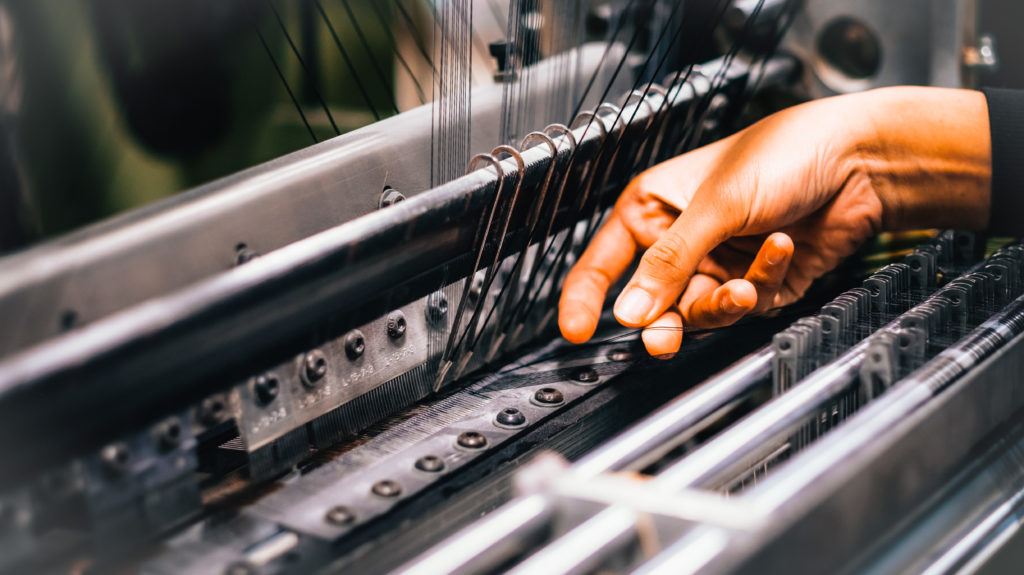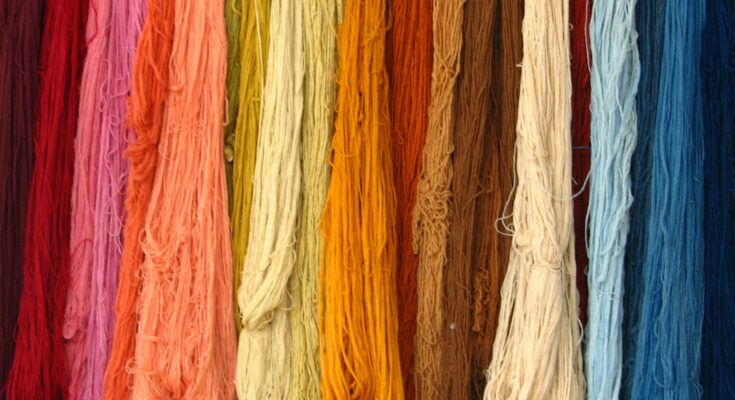Is it even possible to use robots in the textile industry?
Like many people, you might think that textile manufacturing is just too complex for robotic automation. The materials are too unpredictable, the tasks are too varied, and the cost of robotic technology is too high…
… at least that’s what many people think!
Since the Covid-19 pandemic hit the world, many textile manufacturers have had to make a 180° turn to their operations to keep up with the changing demand for textiles.
Some manufacturers rushed to change their operations to produce face masks in order to help reduce the transmission of the virus. Other manufacturers saw the demand for their products change drastically and were required to switch their operations as a response.
All across the world, the textile manufacturers are looking for new ways to improve their processes to keep up with the rapidly changing industry.
Robotics is one of the most reliable technologies for responding to changes quickly. Unlike other forms of automation, robots are very adaptable. With the right tools, you can change a product line in hours, days, or weeks. Not many months as with other types of automation.
Many excellent robotic applications are already being used in the textile industry.
Isn’t Robotics Too Difficult for Textile Manufacturing?
It’s true that robotics has long eluded the textile industry.

As one report from the Wall Street Journal pointed out, it’s ironic that robotics is only now coming to textiles given that the industry was one of the first to be mechanized back in the 18th century.
Fabric manufacturing has, of course, some aspects of automation already. However, for a long time, only specific tasks could be reliably automated (such as yarn forming, carding, cotton mixing, etc.). For more the complex tasks, human dexterity has always been necessary.
The problem is that fabrics are a fickle medium. As KP Reddy from SoftWear Automation says: “One of the biggest technical challenges is really that material flows. It stretches and gets deformed every time you touch it.”
Traditionally, industrial robots have been more suited to working with solid and predictable materials such as metal, plastic, wood, etc.
However, even though industrial robots are not yet able to perform every task in textile manufacturing, there are many robotic applications that can help manufacturers to stay agile.
9 Excellent Robot Applications in the Textile Industry
Whether you’re a textile manufacturer, integrator, or you are just interested in robotics, here are 9 applications that are a great start for deployment in textile manufacturing.
1. Robot Printing and Drawing
Printing designs onto fabric is a core task in garment manufacture. In many cases, the printed design is the only difference between related product lines. Robots are perfect for printing and drawing as the complex paths can be programmed automatically if you’re using the right tools.
This system from Toshin Kogyo Co even allows complex screen printing with a robot:
2. Logistic Transportation
Many of the most exciting new applications in robotics in recent years have not come from the manufacturing tasks themselves but rather in the transportation and packaging of products. These tasks are just as applicable in the textile industry as they are to other types of manufacturing.
Picking, packing, warehousing, and sorting are just a few examples of applications in this category.
3. Bale Handling
Many fabrics start their life as giant bales. These are bulky, heavy, and can be difficult to move around the factory floor.
Bale handling is a perfect task for large industrial robots, which can have payloads up to almost 2 tonnes. They can easily be programmed to pick, stack, and sort bales autonomously.
4. 3D Fiber Structure Printing
One of the latest developments in robotic textile manufacturing is 3D printing.
In a similar manner to normal 3D printing, 3D printed fabrics use fibers that are coated in a polymer for garments like protective firefighting uniforms. The robot guides the fabric into the shape of the 3D structure and the hardening polymer sets it in place.
5. Pick and Place
Pick and place can be used in almost any manufacturing environment when you need to move pieces around the workspace. Although textiles are flexible, it is entirely possible with careful programming to move pieces around using a robot with a modified gripper.
6. Laser Welding
In recent years, there has been a shift away from sewing as the only way to join materials. Techniques such as laser welding allows you to join two pieces of fabric using a laser.
This is a very similar task to other types of welding which are extremely well suited to robotic automation.
7. Fabric Testing
Product testing is an important quality assurance task for some textile products. Although dedicated machines exist for testing particular aspects of textile (e.g. yarn or joins) there is a need for testing of the entire final product. Robots can be a good way to perform this more involved way of testing by applying varied stresses onto the material.
8. Machine Tending
Many of the traditional automated machines in textile manufacturing need to be loaded and unloaded by human operators. This can be a dull and potentially dangerous task — which means it’s perfect for a robot. Adding a machine tending robot can improve productivity and allow workers to move to more skilled tasks.
9. Complex Sewing
Sewing is one of the most challenging aspects of textile manufacturing, particularly when producing garments. Complex paths are required to sew garments that have a 3D shape, which can be very difficult to program given the challenges of the flexible material.
Several solutions have been implemented over the years to handle more complex sewing tasks.
One example is the Sewbo system. The fabric is temporarily converted into a solid piece with a stiffener, making it possible to sew the seams completely autonomously.
Other solutions, like KMF Sewing from Yaskawa, hold the fabric in place with specialized jigs:
And this one from KSL uses a 3D sewing jig:
How to Test Your Robotic Application Quickly and Easily
Changing to robotic automation can feel like a big move. However, it can help your operations to become more agile, allowing you to quickly respond to changes in the global market place — if something changes and you no longer need a particular robot application, you can easily move the same robot to another task and continue to reap benefits.
If you’re looking to implement robotics into your own textile manufacturing process, a great way to get started is to run a small test in a good simulator before you make the leap. With offline programming, you can even reuse your simulation when you finally program the physical robot.
What textile manufacturing tasks are you thinking of automating? Tell us in the comments below or join the discussion on LinkedIn, Twitter, Facebook, Instagram, or in the RoboDK Forum.





Thanks, for letting us know in depths about the robotics applications in textile Industry. This blog has helped us in many ways to learn more and more new things.
When the COVID19 hit, then We have started producing PPE. We manufacture and supply PPE
Automation helps many hazards and can save lives as well. Thank you for the information about robot service in the textile industry. This helps.